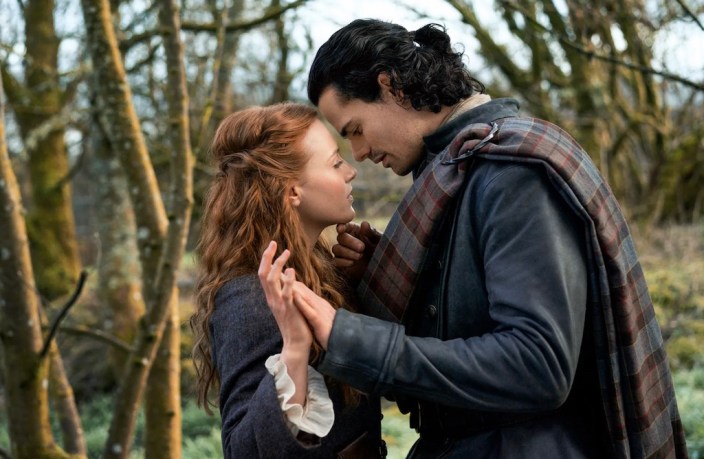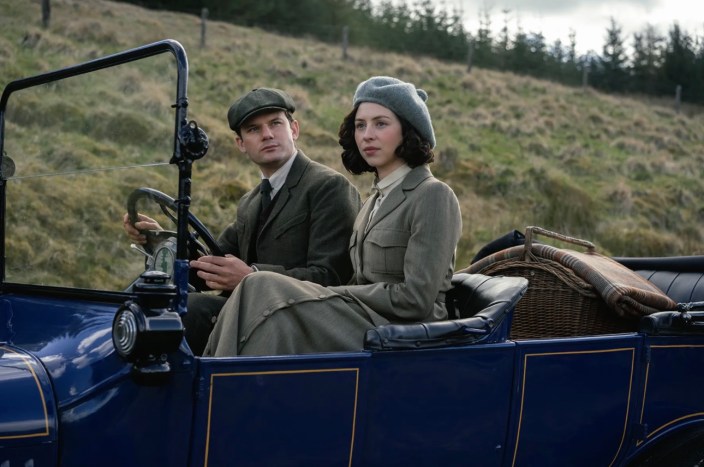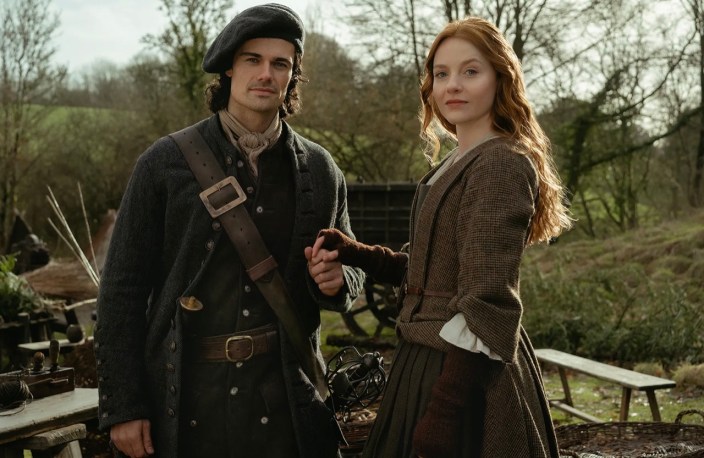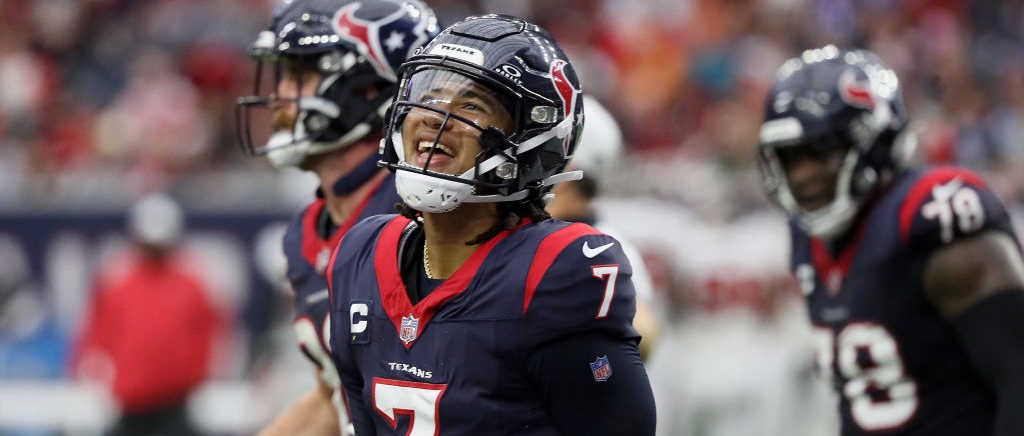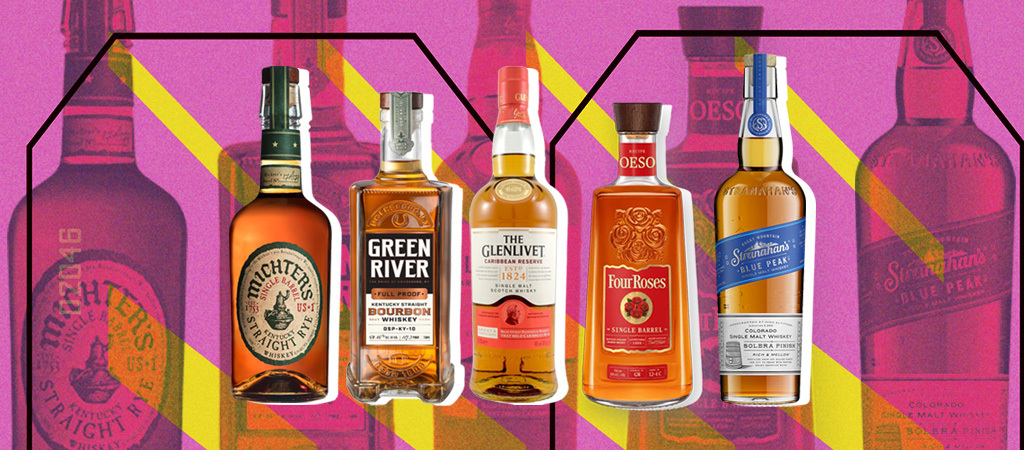
Sure, fancy, expensive bottles get a lot of likes on social media, earning the lion’s share of the hype when they’re first announced, but savvy whiskey enthusiasts know that value is what matters most.
Ask anyone who’s been enjoying whiskey for more than a few years, and they will tell you that they cherish those old faithful bottles that are always available and always reasonably priced. Why? Because they provide a great value every single time. The hobby of collecting and drinking is made much more fun by hunting unicorns (at least when you actually drink and enjoy those unicorns), but for most of us who want a great dram, there are few better joys than having a pour from a bottle we know will hit the spot.
That’s where we begin our exploration today, searching for the best whiskey to buy under $50. Rising prices are playing a significant factor in our buying habits, but in 2025, there are still a ton of great whiskeys sitting on the liquor store shelf for half a hundred dollars.
To prove that point, we gathered the 25 best options you can find anywhere and ranked them below. Make sure you read all the way to the end to discover the best whiskey under $50!
25. Pinhook 5-Year Cask Strength Bourbon
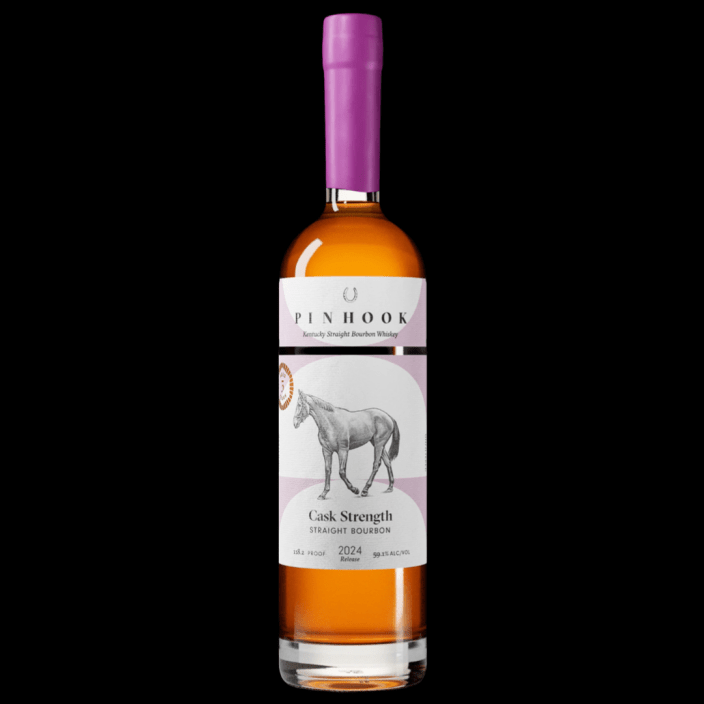
ABV: 59.1%
Average Price: $50
The Whiskey:
Pinhook’s bottles feature eye-catching wax tops in a variety of colors, and admittedly, it can be a bit confusing to try and keep track of which is which, but remember this – the new 5-Year Cask Strength Bourbon belongs in your shopping cart. Featuring a bubblegum-pink wax, this particular bottle is hard to overlook, and once you peel off the top, it’s even harder to forget.
Tasting Notes:
Nose: Apricot jam and vanilla come tumbling out of the glass along with graham cracker pie crust and a bit of burnt sugar.
Palate: The stone fruit carries through to the palate, where the flavor of candied apricots and peanut shells coats the tongue, leaving little room for the slightly doughy note that emerges at mid-palate.
Finish: The finish features a flourish of freshly cracked black pepper and turns slightly lip-puckering, which does well to conclude the light and sweet flavors found at first.
Bottom Line:
The first of Pinhook’s contract-distilled bourbon to come out of Castle & Key is a portend of great things to come. It has a well-developed flavor despite being only five years old and is a proof point that will shock you with how easily it drinks. You’d do well to get in on the ground floor with the whiskey Pinhook is producing right now.
24. Laphroaig 10-Year Islay Single Malt Scotch
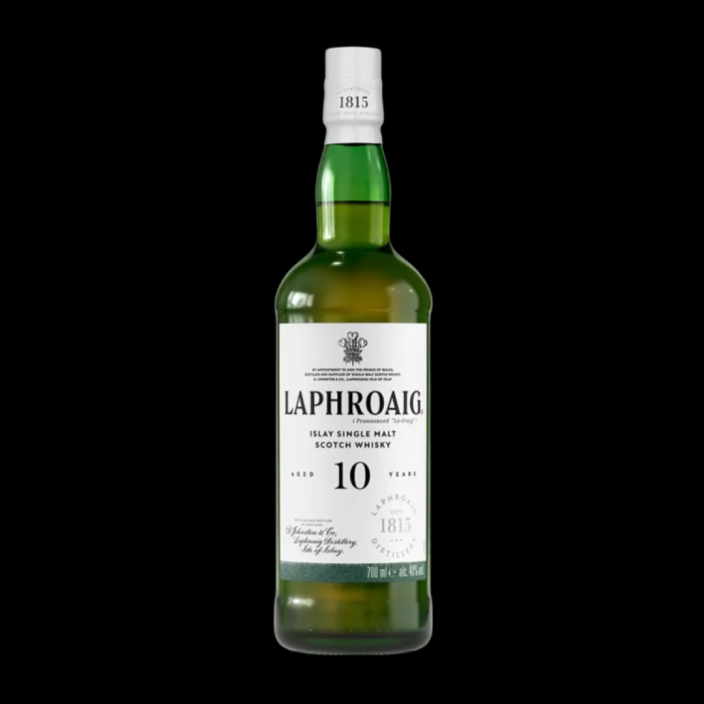
ABV: 40%
Average Price: $50
The Whiskey:
Laphroaig takes malted barley that’s been cold-smoked over peat fires, distills it, and ages it for ten years in ex-bourbon casks to create this classic Islay whisky. The resulting liquid is a culmination of centuries of whisky-making expertise and artfully restrained maturation.
Tasting Notes:
Nose: The nose of this whisky opens with the familiar aroma of peat smoke, a medicinal essence, and salty kale chips that you might expect from a youthful Islay Scotch. There’s also a touch of sweetness in the form of honeyed black tea and a nuttiness reminiscent of Brazil nuts.
Palate: Once in the mouth, this whisky’s supple texture sends waves of flavor to every corner of the mouth. The whisky is surprisingly light despite that heavy array of brooding flavors, leading with faint honey sweetness, enveloped in billows of peated smoke, seawater salinity, and torched oak.
Finish: The medium-length finish is where the sweetness is finally dialed up to max volume as honey-drizzled baklava fuses with the peated smokiness and faint oak flavors.
Bottom Line:
Those who know the prototypical smokiness that comes with Islay Scotch whiskey know that Laphroaig is as classic a demonstration of the style as there is. This full-bodied 10-year expression nails the sweet spot of quality and value, which makes it an instant-buy.
23. Old Forester Rye 100-Proof
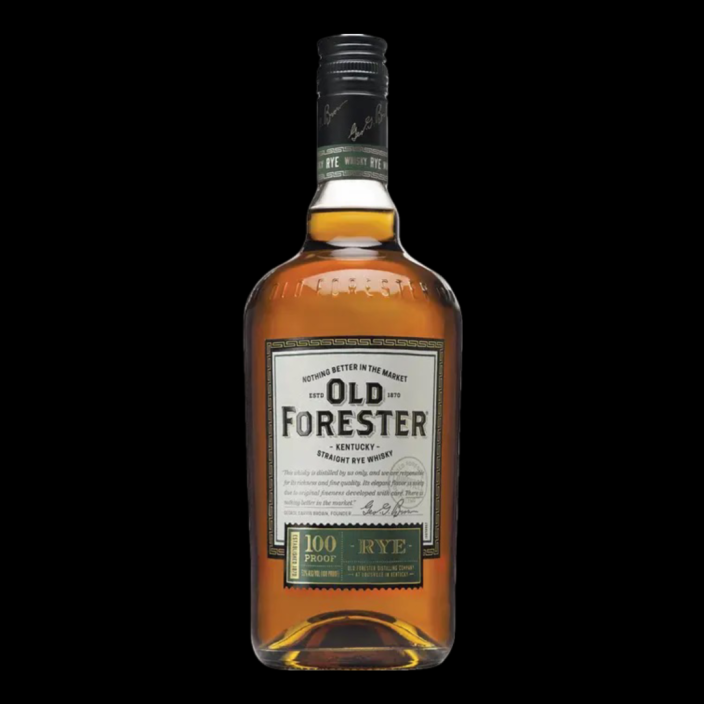
ABV: 50%
Average Price: $28
The Whiskey:
Originally launched in 2019, Old Forester Rye quickly became a fan favorite and a bar staple. Utilizing a historic mash bill acquired by Owsley Brown in 1940, Old Forester Rye consists of 65% Rye, 20% Malted Barley, and 15% Corn.
Tasting Notes:
Nose: Interestingly, on this blind tasting, there is a lot of mint, rye spice, and lemon meringue on the nose of this whiskey for me. The sweet, lemon meringue notes come with a bit of milk chocolate, and once the sweetness subsides, there’s a bit of black pepper and even cinnamon bark hiding underneath.
Palate: The palate is heavier than expected, and a rush of mint, milk chocolate, honey, and rye spice cascades over the tongue on the first sip. The first takeaway is that this multi-layered sipping experience can reward extended consideration. Chewing reveals a bit of youthful oak and a touch of leather.
Finish: The medium-length finish on this whiskey is where the spices return in full force with black pepper and a touch of cinnamon fusing with rye spice, mint, and honey for a balanced and appropriately timely send-off.
Bottom Line:
It’s easy to see why this rye quickly became a bartender’s favorite. With an impressive, well-defined set of flavors that up the ante on the rye content while retaining a base sweetness that appeals to bourbon fans, Old Forester Rye is one of the most versatile whiskeys on the planet, regardless of category. Whether you’re a neat sipper or a regular cocktail consumer, this bottle belongs on your shelf at home.
22. Old Grand-Dad 114 Bourbon
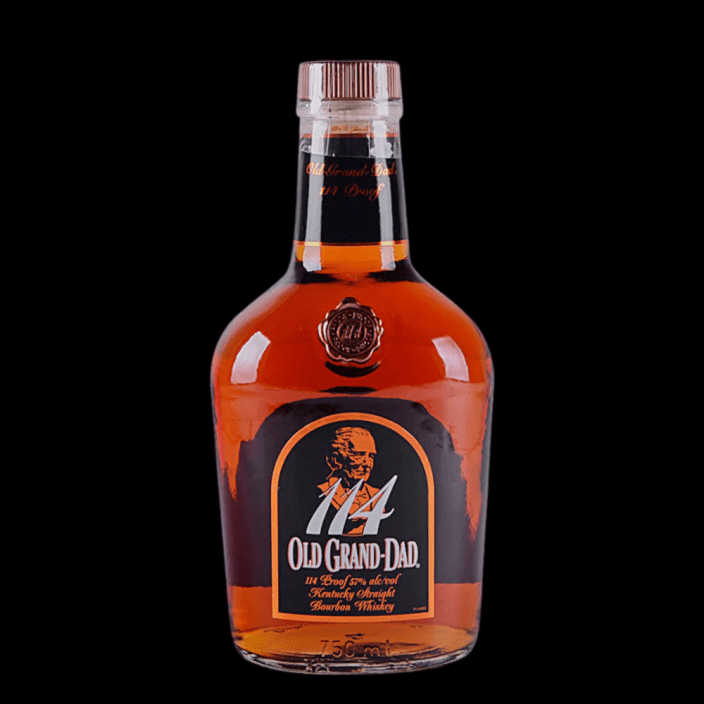
ABV: 57%
Average Price: $30
The Whiskey:
Old Grand-Dad 114 is frequently cited as one of the best budget bourbons on the market, and for 2024, that still hasn’t changed. The high-rye recipe from Jim Beam also goes into its lower proof versions, Old Grand-Dad standard, and Old Grand-Dad Bonded.
Tasting Notes:
Nose: On the nose, OGD 114 opens with a bouquet of lemon zest, maple candy, and peanuts. Those notes are propped up by a supporting cast of oak, light honey, and butterscotch.
Palate: Once you take a sip of Old Grand-Dad 114, you’ll immediately pick up on its medium-bodied texture, which is slightly heavy and dense. The flavor of fresh hazelnuts, honey, and caramel comes across first on the tongue before it turns somewhat mellow at midpalate with butterscotch Krimpets, faint tobacco leaf, and a bit of orange pith.
Finish: For its medium-length finish, OGD 114 delivers a bit of vanilla and black pepper to go with more fresh hazelnuts and oak. This is a perfectly satisfying conclusion that ties all of those well-balanced flavors together.
Bottom Line:
Old Grand-Dad 114 is an OG value bourbon, and enthusiasts should be pleased that Jim Beam has taken an “if it ain’t broke, don’t fix it” approach over the years. For right around $30, it’s hard to find a more flavorful and well-rounded option.
21. Glenmorangie Triple Cask Reserve Scotch
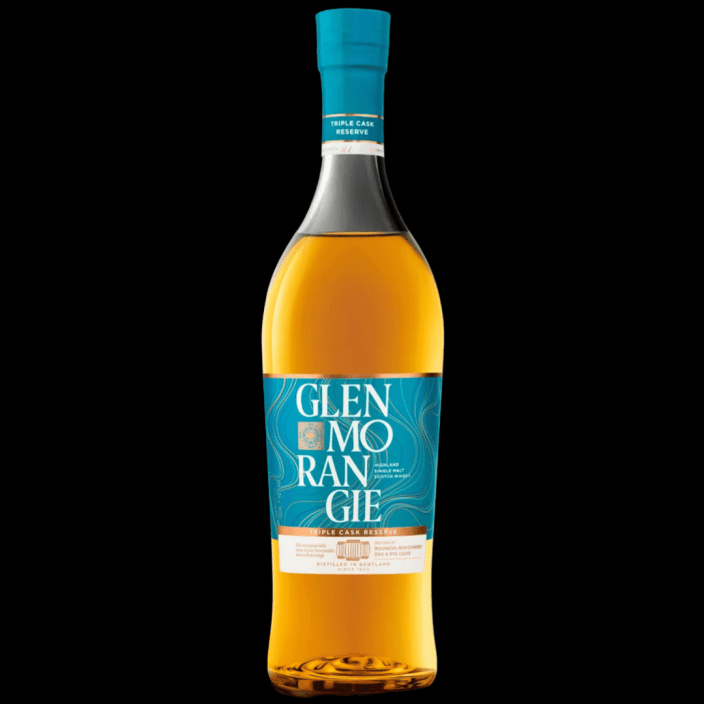
ABV: 40%
Average Price: $41
The Whisky:
This Highland Scotch from Glenmorangie was artfully matured in three different casks: ex-bourbon, ex-rye, and new charred oak. By aging its whisky in three separate casks, Glenmorangie is able to create a unique flavor profile that’s perfectly tailored to its target audience for this expression: the American palate.
Tasting Notes:
Nose: The triple maturation is evident on the nose, with the aromas of pears, vanilla, and candied orange peel playing nicely alongside clove, cinnamon, and dilute caramel notes.
Palate: On the palate, this whisky is effusively sweet with a slick texture, introducing the flavors of creme brulée, cherry cordials, orange buttercream, clove, and tropical fruits (think bananas and mango skin) to the tongue. The flavors begin to wash out a bit at midpalate, but the taste of tropical fruit, citrus, and clove continues to hold strong as it transitions to the finish.
Finish: The medium-length finish on this whisky kicks the intrigue up a notch as it introduces almond extract, marzipan, and dried apricots to the party. There’s also a fresh infusion of black pepper and rye spice which keeps all of those lovely sweet notes in check.
Bottom Line:
By using a blend of three different casks, Glenmorangie is able to really dial in on the flavors of this expression, making it a Scotch whiskey that American palates are taking to in spades. Those warm caramel and honeyed malt tones make this one a delicious everyday sipper.
20. FEW Rye Whiskey
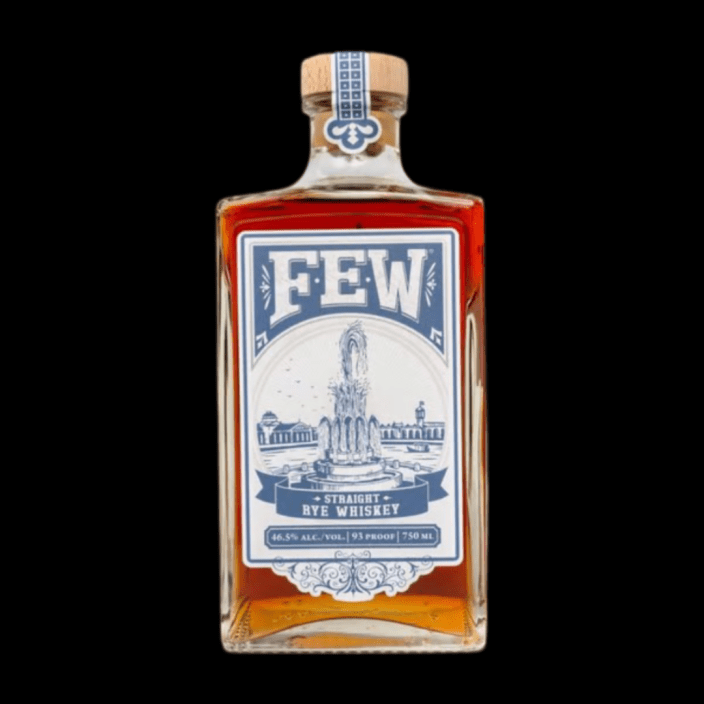
ABV: 46.5%
Average Price: $40
The Whiskey:
The proud product of Illinois’ nascent distilling scene, FEW Spirits really transformed the region since its founding back in 2011. With this rye serving as one of the brand’s flagship expressions, they’ve successfully carved out a unique niche in the space.
Tasting Notes:
Nose: The nose on this whiskey opens with the aroma of mint chocolate chip ice cream, black pepper spice, some faint butterscotch, and ripe raspberries. It’s a delightful melange that draws you deeper into the glass to appreciate just how well-developed the dark chocolate note is alongside the sweet mint.
Palate: In the mouth, this whiskey remains true to its nosing notes with mint and dark chocolate standing out along with creme brulee, fresh raspberries, and a just a touch of cedar. The mouthfeel is spry and lean, but the flavors remain bold and sumptuous across the surface of the tongue.
Finish: The moderate finish is where dark chocolate and mint push all of the other notes to the side while a touch of vanilla and black pepper spice close things out.
Bottom Line:
This chocolatey, minty rye has everything worth loving about the category. While the contemporary Kentucky style of rye whiskey leans heavily on its corn content to deliver a bourbon-adjacent flavor profile, this product of Illinois confidently stands apart and is blazing a new path forward for the category.
19. Evan Williams Single Barrel Bourbon
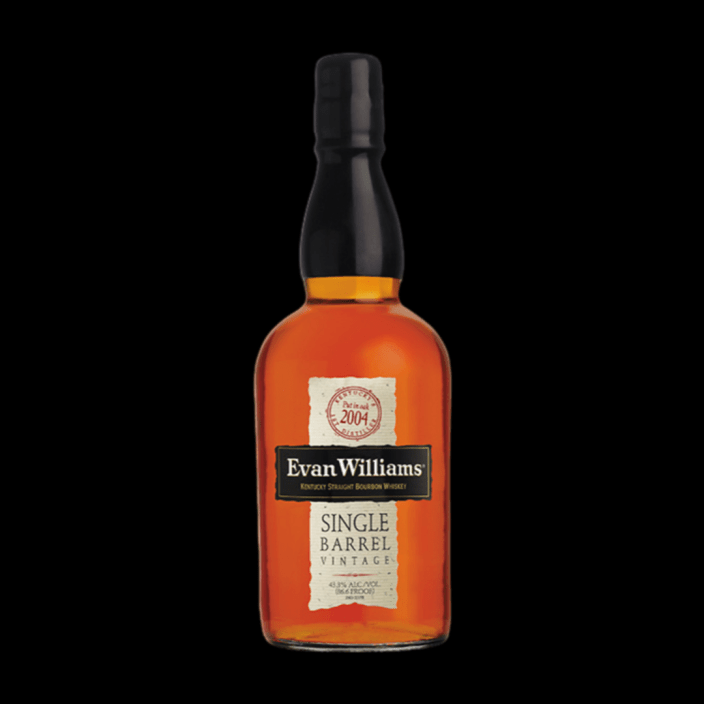
ABV: 43.3%
Average Price: $35
The Whiskey:
Evan Williams Single Barrel Bourbon was transitioned into a Kentucky-exclusive offering in 2022. However, in 2024, the brand announced that it would be distributed in other states for the first time in two years due to a surplus. The word isn’t yet out on whether that trend will continue through 2025 and beyond, but it came as welcome news to fans of the Evan Williams lineup’s only single-barrel bourbon.
Tasting Notes:
Nose: The nose opens with the aroma of honey and peanut shell, which soon morphs into gently tannic oak tones and fresh orange rinds. Caramel and graham cracker notes also inform the nosing notes before a few shakes of black pepper curb the overall sweetness.
Palate: The honey flavor leads the palate as peanut shells and caramel take a backseat. The texture is surprisingly thin, but the flavors are not without considerable depth, defying their limitations to take root throughout the palate.
Finish: The finish welcomes an uptick in the influence of the oak and black pepper, only alluded to at other points in the flavor journey. While it’s only a short-to-medium finish, that brevity complements the flavor profile, making this an approachable and easy-to-enjoy pour again and again.
Bottom Line:
Despite its relatively low ABV, Evan Williams Single Barrel’s mellow profile delivers rich flavors that cause it to punch above its weight. While longtime fans of the brand continue to grumble that “it ain’t what it used to be,” remarking on a perceived shift in quality and a substantive uptick in price, this continues to be a great, flavorful, smooth bourbon.
18. New Riff Single Barrel Bourbon
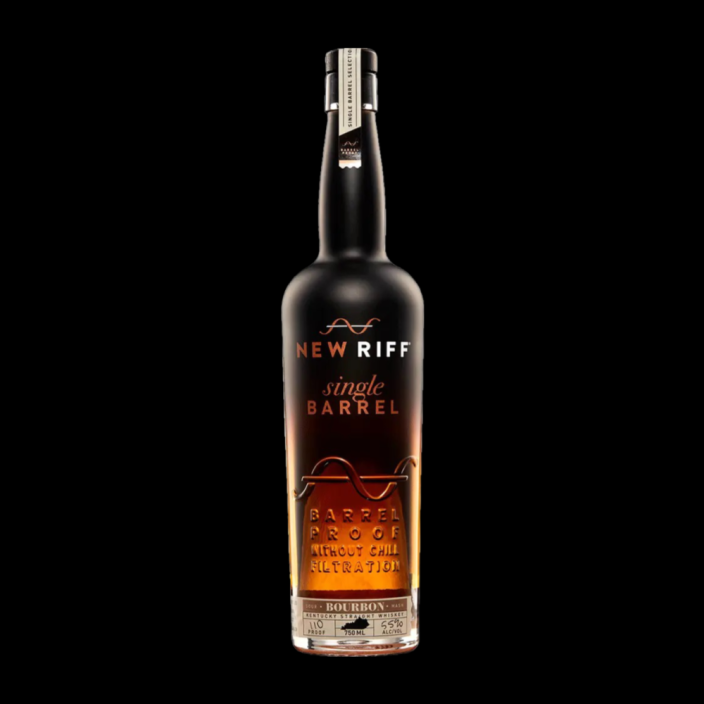
ABV: 51.95%
Average Price: $63
The Whiskey:
New Riff produces a stellar 100-proof offering, but for its single-barrel expression, it elevates things by delivering its whiskey at cask strength without chill filtration.
Tasting Notes:
Nose: Caramel corn, peanut shells, and cedar come wafting out of the glass when you first pour New Riff Single Barrel, and those notes are quickly joined by cream soda and burnt sugar for a delightful blend.
Palate: Once on the palate, this bourbon leads with cream soda, clove, vanilla wafers, and rich, decadent caramel notes. A touch of white pepper pricks the tip of the tongue, and at midpalate, some more fruit-forward notes of ripe cherries start to develop. The mouthfeel is a bit lean, but who cares when you have well-developed flavors?
Finish: The brief finish welcomes white pepper and youthful oak before the flavor of caramel envelopes your palate and gives you a sweet kiss to conclude each sip.
Bottom Line:
By showcasing its barrel inventory’s variety of flavors with this single-barrel lineup, New Riff delivers a delicious bourbon-sipping experience at a higher proof that offers a unique profile every single time. This is a bottle that you can’t afford to ignore any longer.
17. Knob Creek Rye Whiskey 7-Year
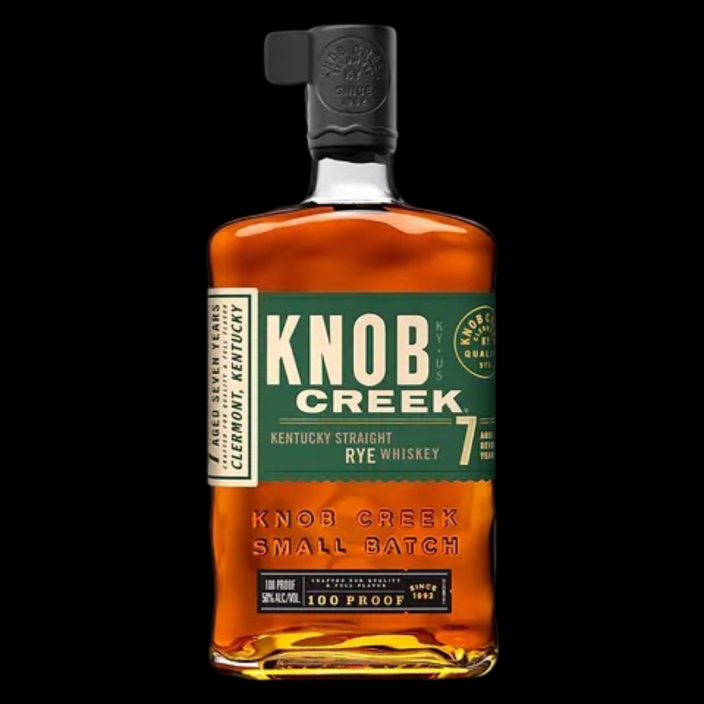
ABV: 50%
Average Price: $37
The Whiskey:
Knob Creek’s original rye whiskey, this 7-year expression debuted back in 2012 and has been a staple on backbars ever since. The expression welcomed a return of its 7-year age statement in 2023, and that’s holding firm for 2024.
Tasting Notes:
Nose: The nosing notes on Knob Creek’s 7-year rye begin with honeysuckle, raw mint, and black pepper, with a touch of dill seed, oak, and hazelnut all having their say in this charming bouquet of aromas.
Palate: On the palate, all of the nosing notes persist to varying degrees, with the honeysuckle and raw mint notes blending well with the black pepper and hazelnut. At the same time, the oak is relegated to being a featured player, and the dill seed notes are faintly evident.
Finish: The finish welcomes an uptick of the spice notes, with rye spice and nutmeg seizing the reins while some gentle tannins and caramel come through.
Bottom Line:
Knob Creek fans rejoiced when this classic rye revived its 7-year age statement, and even with the lineup’s expansion, including a new 10-year offering, the OG still hits the sweet spot. If you want a bang-for-your-buck whiskey, it’d be hard to do much better than Knob Creek 7-Year rye.
16. Woodinville Straight Bourbon Whiskey Finished In Port Casks
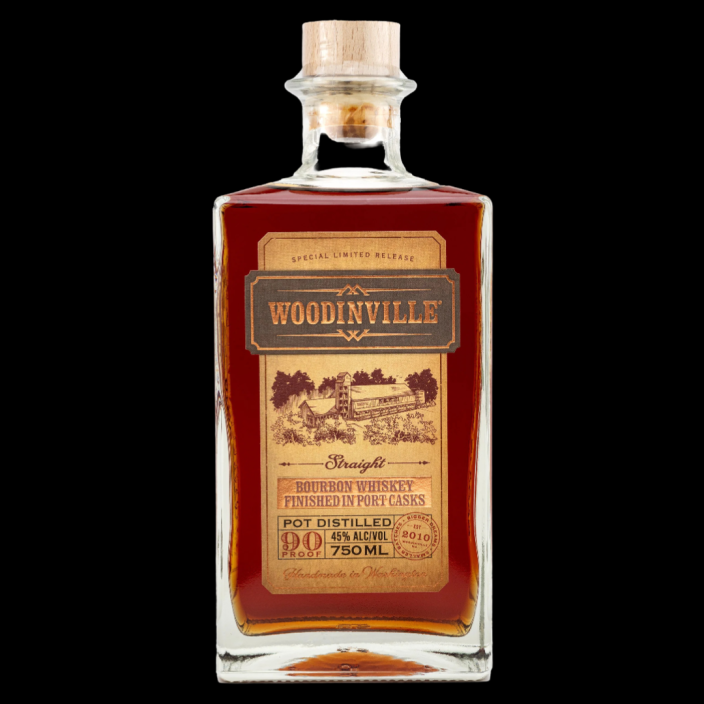
ABV: 45%
Average Price: $50
The Whiskey:
Using highly acclaimed casks from Portugal’s Douro Valley to finish Woodinville’s Straight Bourbon Whiskey for six months results in a product that’s every bit as delicious as it sounds. Originally released in 2017, this expression was so beloved that the brand sought to make it a part of its permanent portfolio in late 2024.
Tasting Notes:
Nose: The nose on this whiskey is immediately evocative of baked plums and chocolate-covered cherries with a strong presence of caramel, toasted coconuts, and cinnamon, reminding you that Woodinville’s stellar bourbon is at the base of this finished delight.
Palate: Once on the palate, an initial wave of black cherries, toasted coconut, and cinnamon beguiles the senses and soothes denser notes of oak and mocha into the edges of your tongue as sweetness claims the midpalate. The liquid itself has a lean but viscous mouthfeel, enabling you to swirl it over your palate and chew the whiskey, unlocking subtler hints of clove and hazelnut.
Finish: The finish features coconut, cedar, black pepper spice, and dark chocolate with faint touches of red berries that hold it all together. It lingers for a surpringly long time after each sip, as well, making this a decadent treat from start to finish.
Bottom Line:
We’re already raving fans of Woodinville’s whiskey output, and this new ongoing release has only fanned those flames. If you aren’t already riding the Woodinville Whiskey hype train, then it makes sense to get aboard with this next stop on their journey because it is damn good stuff.
15. Widow Jane Paradigm Rye Whiskey
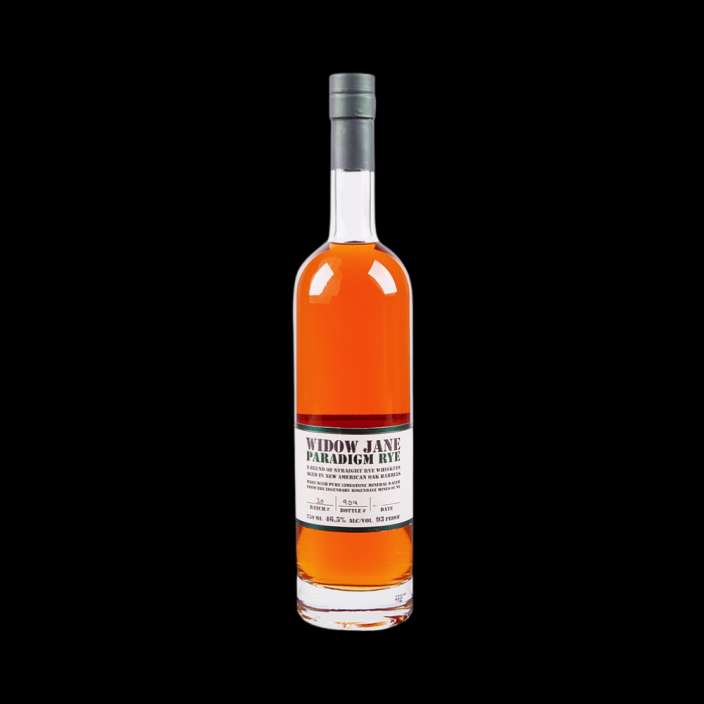
ABV: 46.5%
Average Price: $50
The Whiskey:
Widow Jane hails from the Red Hook neighborhood in Brooklyn, NY, and is primarily known for its stellar blends of sourced whiskey. For its Paradigm Rye, however, they’ve kicked things up a notch—still utilizing that sourced stock but blending it with their own distillate and proofing it down with their signature mineral water from the Rosendale Mines in New York.
Tasting Notes:
Nose: A bit of cloying, almost artificial sweetness, perfumes the air at first. On a second whiff, a distinct mint tea aroma melds well with the scents of celery seed and chalky sweetness reminiscent of Smarties candies.
Palate: Wow, the palate is resplendent with honey and mint tea before that lovely Smarties candy note arrives at midpalate. Add to that just a touch of oak and a warm, viscous mouthfeel, and this is a pour that you will revel in on the second sip more than the first. And then the third more than the second.
Finish: A touch of tobacco leaf and golden raisins accent the back end of each sip, which has just enough staying power to allow you to savor those well-balanced flavor notes.
Bottom Line:
If one thing can be said about the Widow Jane team it’s that they simply deserve respect. While the art of blending has been slow to receive its due credit in the American whiskey world, Widow Jane is leading the change with precocious expressions like Paradigm Rye.
14. Glenlivet Caribbean Reserve Single Malt Scotch
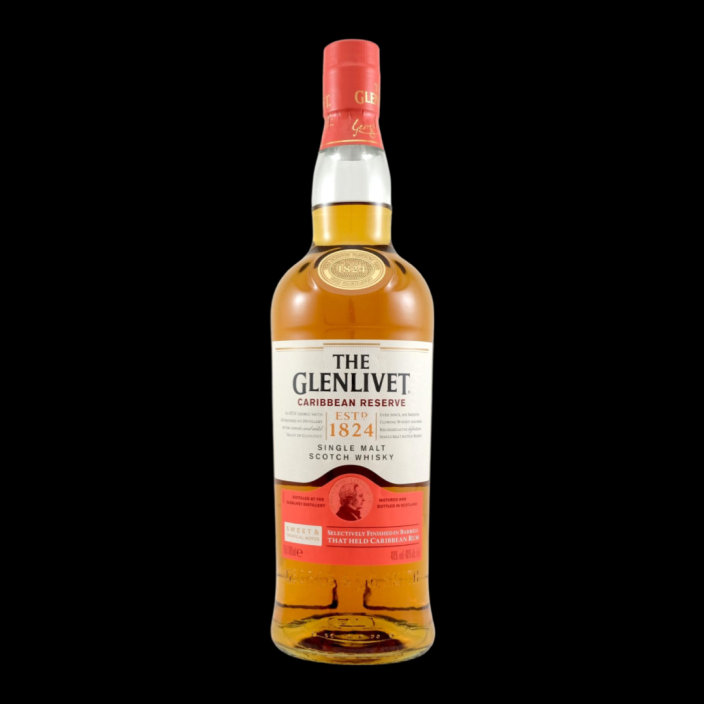
ABV: 40%
Average Price: $47
The Whisky:
Born in Scotland’s Speyside region, this tropically influenced expression from The Glenlivet is a Single Malt Scotch whisky finished in Caribbean rum barrels. The resulting flavors lean heavily into those associated with delicious rum while still maintaining the character of The Glenlivet’s base whisky.
Tasting Notes:
Nose: The nose on this whisky opens with butterscotch, candied orange peels, and vanilla. With a few waves of the hand, the whisky is made to evolve through the interaction with oxygen, allowing notes of ripe melon, Manuka honey, and peach rings to find the nose.
Palate: On the palate, there’s a fleeting flavor of bananas foster, which soon introduces black pepper, nutmeg, sugared grapefruit slices, and sticky toffee to the tongue. The whisky has a dense structure despite its lean mouthfeel, allowing you to savor each layer of flavor as a distinct feature without muddling them all together.
Finish: The finish is fairly succinct, but it leaves a big pop of candied orange peel in its wake before gently receding.
Bottom Line:
By combining The Glenlivet’s stellar standard whisky with the tropical flavors of casks that previously held Caribbean rum, this bottle is a star. Taking a best-of-both-worlds approach is typically better in theory than in practice, but Glenlivet Caribbean Reserve Single Malt is one of those impressive exceptions to the rule.
13. Early Times Bottled in Bond
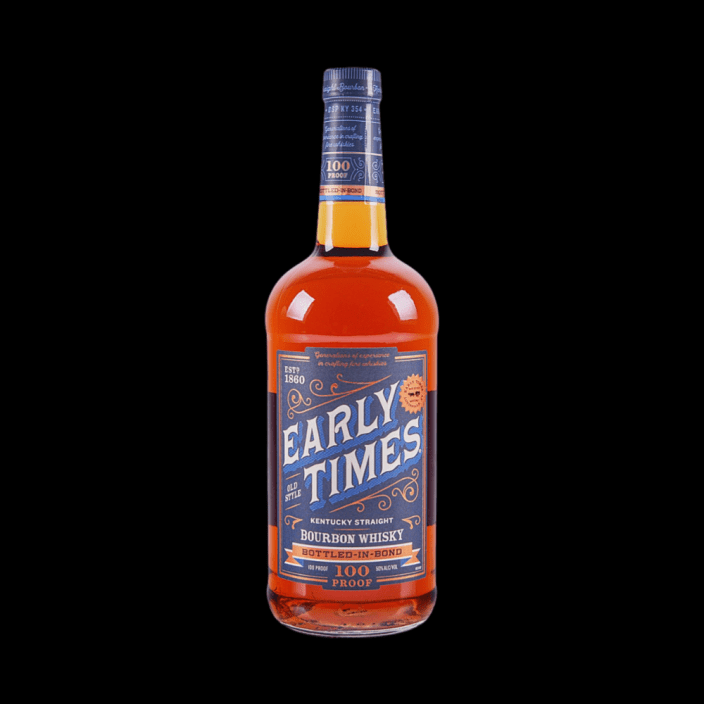
ABV: 50%
Average Price: $25
The Whiskey:
Early Times is a historic brand first launched in 1860 by John Henry “Jack” Beam, Jim Beam’s paternal uncle. In 2021, it was announced that the production of this bourbon would be moved from Brown-Forman, the brand’s previous owner, to the Barton 1792 Distillery under new owner Sazerac.
Tasting Notes:
Nose: On the nose, there’s a strong Luden’s Wild Cherry cough drop note that is distracting at first but becomes increasingly enchanting over time. In addition to that artificial, berry-like sweetness, there are notes of ripe oranges, polished leather, and fresh hazelnuts.
Palate: On the palate, it’s the artificial cherry note and the polished leather from the nose that make the biggest impression as each sip begins very sweet before trailing off into more typical, earthy bourbon notes like oak and nutmeg. Just as the flavors seemingly shift from the front palate to the mid-palate, so does the texture, which begins very slick and viscous before turning lean as the whiskey makes its way to the finish.
Finish: The finish on Early Times Bottled in Bond features a flourish of black pepper and barrel char, which wasn’t present at midpalate. The lengthy finish also showcases an additional pop of fresh hazelnuts, adding a layer of balance to the entire affair.
Bottom Line:
Early Times Bottled in Bond has a fruit-forward medley of flavors and substantive texture, allowing it to hold its own as a neat sipper. Considering that, its budget-friendly sticker price awards it extra points, allowing you to happily skip bottles that are two to three times the cost.
12. Still Austin Cask Strength Bourbon Whiskey
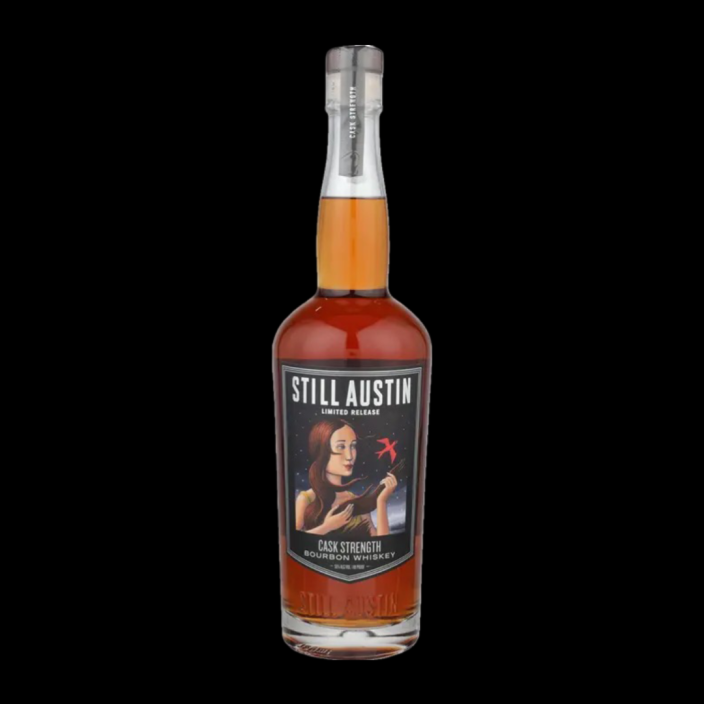
ABV: 59%
Average Price: $56
The Whiskey:
Still Austin is one of the fastest-rising stars in America’s craft bourbon scene, and that’s largely due to the influence of their Master Blender, Nancy Fraley. Fraley, who is also responsible for notable expressions from Wyoming Whiskey, J. Henry & Sons, and Jos. A. Magnus, to name a few, is well known to favor techniques like slow-water-reduction that are more commonly found in the world of Brandy.
Tasting Notes:
Nose: A caramel, pie crust, and brown sugar fusion leaps out of the glass to greet the nose at first. A bit of nougat and some oak round things out, giving this bourbon a distinctly candy-bar type of vibe.
Palate: Grilled pineapples, salted caramel sable, overripe bananas, and oak hit the palate at first for a savory-sweet melange that makes you smack your lips. The mouthfeel is fairly impressive as well, with a robustness across the palate that helps send all of those well-developed flavors to the furthest corners of your mouth before the finish unfurls.
Finish: The finish is a tad shorter than you’d hope, given the viscousness of the texture and solid display of flavors, but with a bit of cucumber and oak capping things off in concert with some caramel, it’s an intriguing close out to an otherwise flawless pour.
Bottom Line:
What makes Still Austin Cask Strength Bourbon so worthy of your attention, aside from its formidable array of flavors, is that the brand employs those aforementioned Brandy-style techniques to bourbon production in one of the climates most infamous for producing “hot” bourbon. By delivering a lighter take on Texas bourbon and eviscerating the presumption of its supremacy in the process, Still Austin is proving both the viability and the variability of the style.
11. John J. Bowman Single Barrel Bourbon
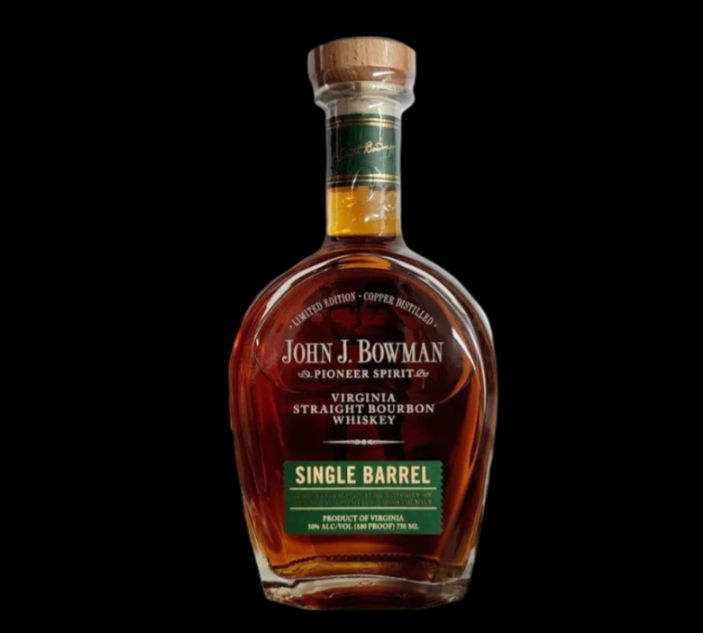
ABV: 50%
Average Price: $50
The Whiskey:
For their John J. Bowman single-barrel expression, the brand selects some of the oldest barrels in their inventory, though the age is omitted. Of note: the Fredericksburg, VA distillery was purchased by the Sazerac Company in 2003, which also owns Buffalo Trace.
Tasting Notes:
Nose: On the nose, John J. Bowman Single Barrel Bourbon opens with Rainier cherries, butterscotch, and one shake of black pepper spice while some barrel char and red raisins gently play their notes in the background.
Palate: John J. Bowman greets the palate with more red raisins and barrel char with the taste of red cherries clinging to the tip of the tongue, allowing some mellow baking spices like nutmeg and cumin to hit the mid-palate before dark chocolate ushers in the finish. The mouthfeel is medium-bodied but it has impressive staying power, remaining consistent from the beginning of the palate to the end.
Finish: The finish is medium-length, but underlines the sweeter notes in this bourbon with bright red cherries, a touch of honey, and some sweet oak sticking around the longest.
Bottom Line:
While savvy bourbon enthusiasts have been gravitating towards this release due to the Bowman Distillery’s ties to Buffalo Trace, the truly discerning bourbon fan can just as quickly throw that connection out of the window. This is simply great bourbon. The fact that it comes with high quality in a single-barrel format is all the more enticing for those who enjoy seeking out unique flavors and a surprising sipping experience.
10. Bardstown Bourbon Company Origin Series High Wheat Bourbon
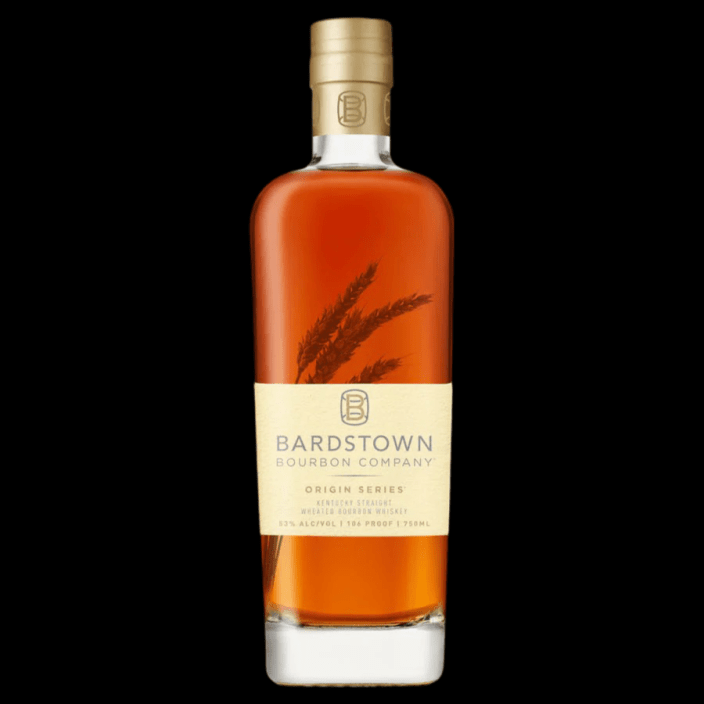
ABV: 53%
Average Price: $50
The Whiskey:
Bardstown Bourbon Company’s Origin Series, founded in 2023, began with three initial entrants, but this new 6-year-old High Wheat Bourbon marks the lineup’s first official expansion. By combining a low barrel entry proof with a high percentage of wheat (39%) in the grain recipe, the brand sought to extract the maximum amount of wood sugars.
Tasting Notes:
Nose: The aroma of this Origin Series High Wheat Bourbon begins with a ton of crème brûlée and strawberries before a touch of oak, wheat funk, and caramel comes through. There are also a few dashes of clove and lemon zest to round things out.
Palate: Once on the palate, the strawberries and custard notes play a major factor as the remarkably creamy texture of the liquid coats your palate and finds every corner of the mouth. Mellow oak tones, vanilla frosting, and flaky pastry flavors also enhance the bourbon.
Finish: The finish here is surprisingly lengthy, with the strawberry note going from ripe berries to the dried variety as a touch of nutmeg creeps in and the gentle oak vibes fuse with honey.
Bottom Line:
Bardstown Bourbon Company already has a wheated bourbon in their Origin Series, and it’s a rock solid option that has its fair share of admirers among those who have tasted the well-received lineup. That said, this High Wheat Bourbon is absolutely stunning, and not only does it one-up its wheated bourbon predecessor, but it also blows the rest of the stellar Origin Series out of the water.
9. Heaven Hill Bottled in Bond 7-Year Bourbon
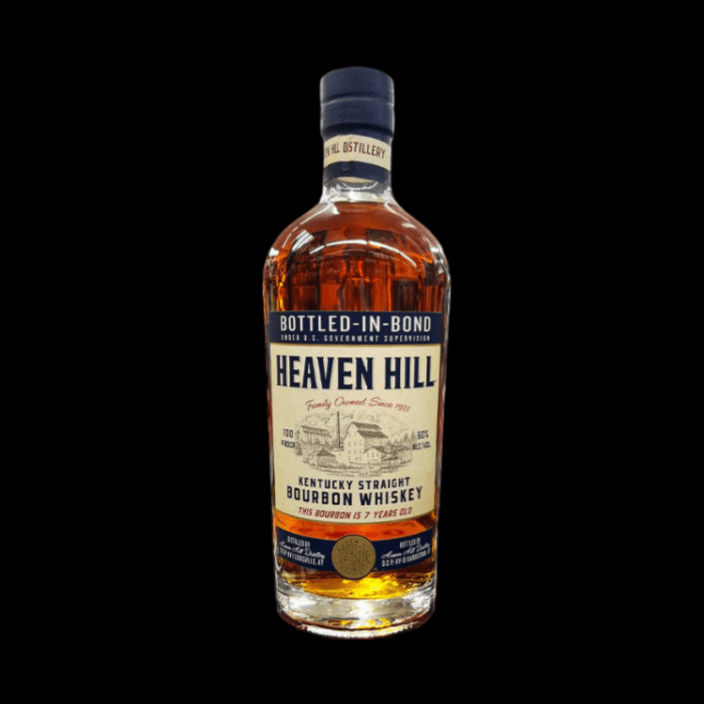
ABV: 50%
Average Price: $30
The Whiskey:
Heaven Hill’s flagship bottled-in-bond expression is a rebranded release first launched in 2022. Sticking true to their roots, this bourbon is made with their “HH reg” mash bill of 78% corn, 10% rye, and 12% malted barley.
Tasting Notes:
Nose: The nose on Heaven Hill Bottled in Bond 7-Year is distinctly earthy and nutty with walnuts and potting soil melding well with brown sugar and oak. All of those enticing notes are undergirded by the warm aroma of vanilla pods.
Palate: Once across the palate, Heaven Hill Bottled in Bond 7-Year leads with brown sugar before the earthier elements of cinnamon bark, nutmeg, oak, and walnuts claim the midpalate. As this pour transitions to the finish, there’s a faint bit of milk chocolate, vanilla cream, and caramel.
Finish: The finish puts a lovely bow on the entire affair as brown sugar and barrel char fuse together with walnut shells and black pepper. Overall, the finish gives the impression that this bourbon is slightly older than seven years, and as it closes with a dash of vanilla extract, it whets the palate, bracing your senses for repeat sips.
Bottom Line:
If you’re looking to keep a few extra bucks in your pocket for the price point, flavor profile, and ample time spent aging, this is a bottled-in-bond bourbon that you need to set your sights on. Heaven Hill deserves credit for championing budget-friendly bourbon, and this bottle is one of the best of the bunch.
8. Compass Box Orchard House Blended Malt Scotch
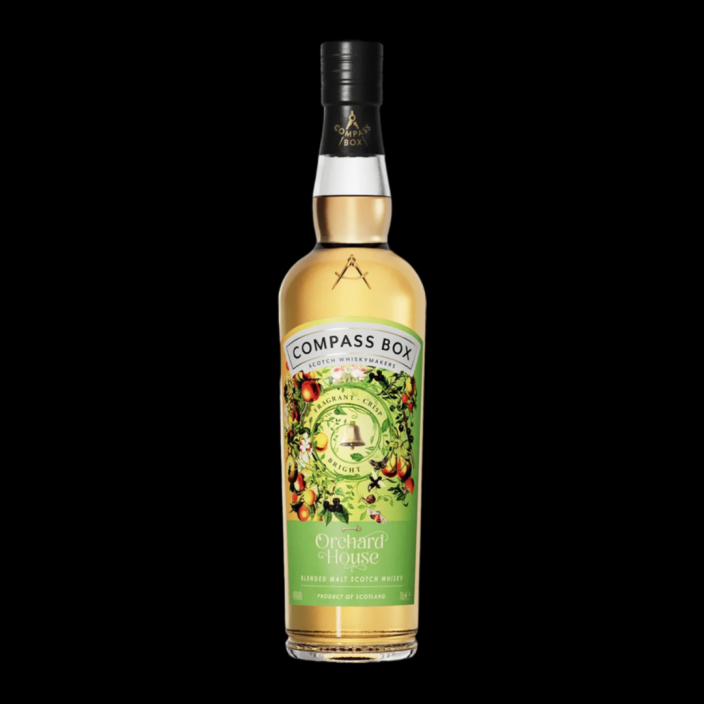
ABV: 46%
Average Price: $50
The Whiskey:
One of the things that make this brilliant non-chill filtered blended malt Scotch whisky so appealing is the fact that Compass Box doesn’t just artfully mingle the six different components that make up this expression, but they go the extra step of listing them for all to see. The largest percentage of the blend comes from the Clynelish Distillery, giving it a first-fill bourbon barrel base that ties each of the additional components together.
Tasting Notes:
Nose: Stone fruits run roughshod on the nosing notes of this whisky, with a subtle infusion of tropical fruit breaking things up. Citrus can be found as well, in the form of orange peel and lime zest, with a final flourish of black pepper and Earl Grey tea rounding things out.
Palate: Once on the palate, it’s candied ginger and sweet malt notes that take the lead while cream soda, ripe pears, apples, plus nondescript red berries flesh out the flavor wheel. The whisky is slick and surprisingly full-bodied, which makes plumbing the layers of flavor by sucking your teeth and chewing the liquid much more enjoyable.
Finish: The finish is short-to-medium in length, aided by its viscous texture, and it concludes with the flavor of sugar cookies, dried strawberries, honeyed black tea, and green apples.
Bottom Line:
Compass Box’s Orchard House expression is clearly intended as a love letter to ripe orchard fruits, and they’ve most definitely succeeded in this endeavor. Rather than harping on a single note or a small cadre of familiar flavors, this whisky explores an array of fruit-forward notes while allowing baking spices to balance things out. It’s a thin needle to thread, but your palate will appreciate just how grand the reward is.
7. Ardbeg Wee Beastie Single Malt Scotch Whisky
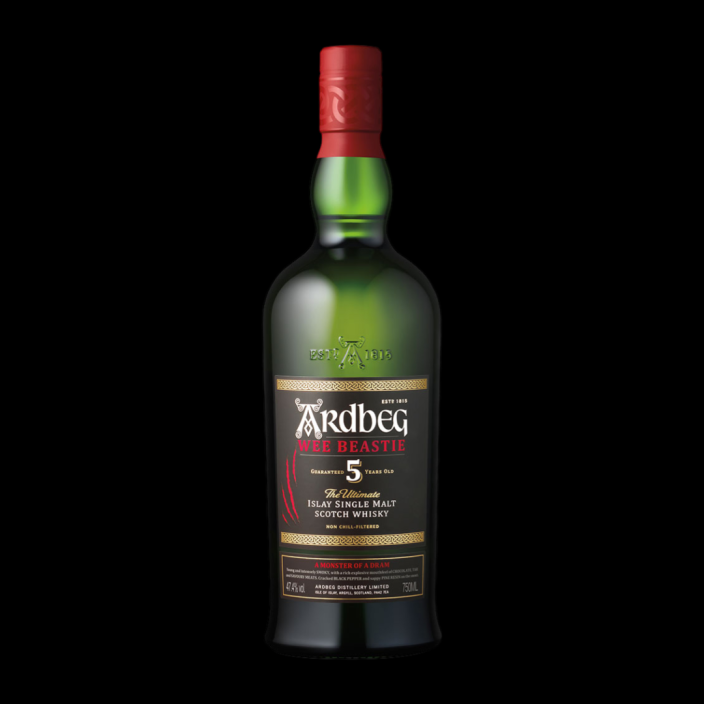
ABV: 47.4%
Average Price: $50
The Whiskey:
Ardbeg’s youngest expression makes up in brashness what it lacks in age. Matured in ex-Bourbon and Oloroso Sherry casks this precocious whisky is bottled without chill filtration to maximize the flavors within.
Tasting Notes:
Nose: On the nose of Ardbeg’s Wee Beastie, you can expect to pull notes of herbal tea, vetiver, vanilla, and ripe pears. There’s just a faint indication of smokiness, with savory notes of bacon fat fusing with fresh apricots, green apples, and raw honey.
Palate: Once this whiskey finds its way to your palate, expect notes of salted dark chocolate, ripe green apples, eucalyptus, and allspice to begin pooling at the middle of the tongue. Along the edges of the tongue are where other spices like black pepper and star anise can be found, causing you to salivate and turn those spices into sweeter notes of honey and the savory flavor of brisket burnt ends.
Finish: The lengthy finish continues that delicate dance between sweetness and savoriness as chocolate ganache supplants the meaty bacon fat notes found throughout. The result is a full-bodied final sip that you’ll savor long after the liquid leaves your mouth.
Bottom Line:
Ardbeg is known for being one of the cheekiest brands around, with a brash brand ethos that’s won them a ton of adoring fans just as much as the world-class whisky they make. With the Wee Beastie, they’ve cashed in that cache and delivered a young but frighteningly delicious whisky that you’ll remember fondly for the bite of its bold flavors.
6. Four Roses Single Barrel Bourbon OBSV
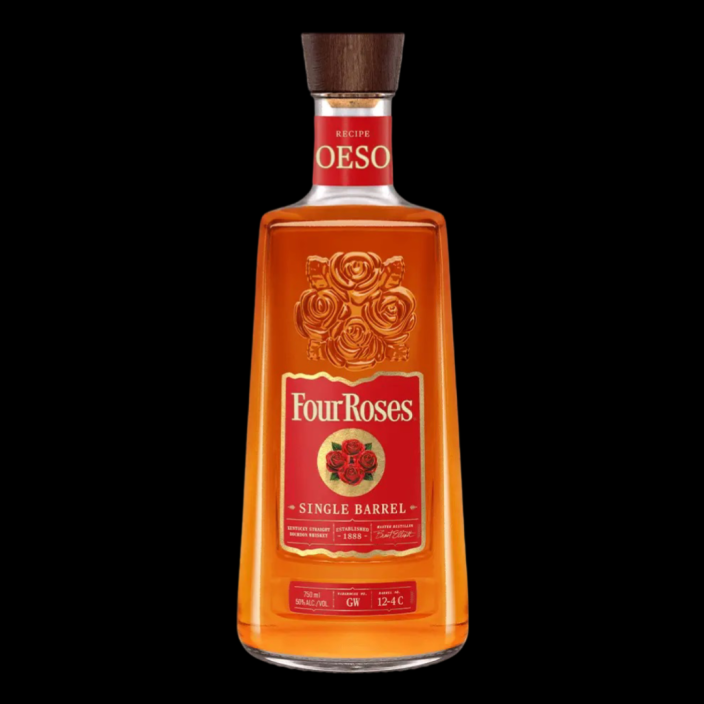
ABV: 50%
Average Price: $44
The Whiskey:
This bottle, a single-barrel version of Four Roses’ OBSV recipe (learn about all of their recipes here), is an absolutely classic bourbon. The brand describes the OBSV recipe as having a delicate, fruit-forward yeast and a high-rye mash bill.
Tasting Notes:
Nose: The nosing notes are resplendent with red berries as the aroma of raspberries and black cherries leap out of the glass, along with a touch of sage, singed mint, Brazil nuts, and blood oranges. This is one expressive and inviting nose.
Palate: On the palate, those flavors continue to develop as the blood orange fuses with black cherries, and they’re joined by black pepper spice, singed mint, sage, and even a bit of cedar at midpalate. The juxtaposition of citrus, sweetness, woodsiness, and baking spice might seem like a cacophony of flavors, but they all come together harmoniously.
Finish: The finish is where the baking spice slightly wins out over the fruit-forward notes as it lingers with medium length on the tongue, sizzling the tip and leaving bits of bright cherry and Valencia orange meat on the back end.
Bottom Line:
Four Roses Single Barrel Bourbon is packed with flavor but still maintains an approachability and sweetness that will make it appealing to connoisseurs and novices alike. Furthermore, it has a berry-forward flavor profile that absolutely shines when enjoyed neat, but it still lands at a price point that makes it fair game for mixing in cocktails.
5. Michter’s US*1 Single Barrel Kentucky Straight Rye Whiskey
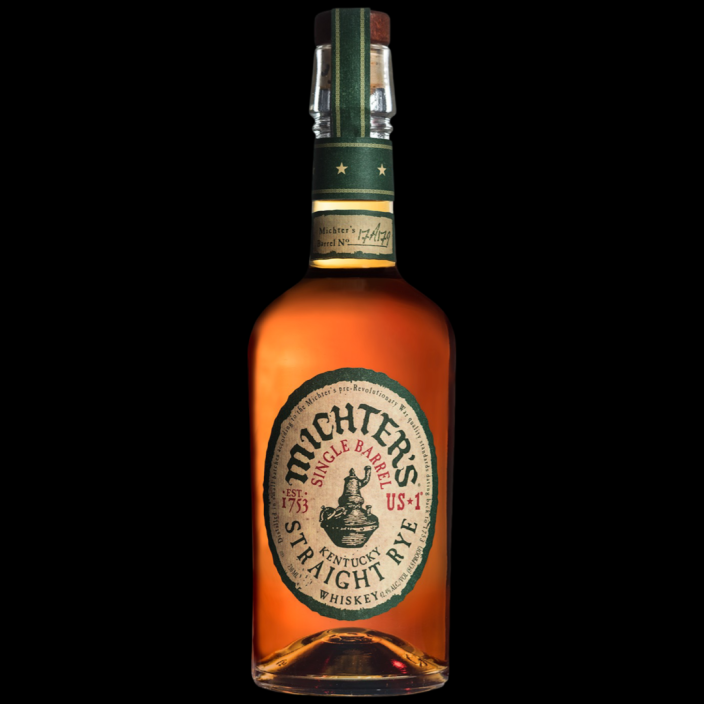
ABV: 42.4%
Average Price: $45
The Whiskey:
For its flagship rye whiskey, Michter’s rests the liquid for an undisclosed period of time before blending it in 20-barrel small-batches and bringing it to bottling proof with some of that famous Kentucky limestone water.
Tasting Notes:
Nose: Lime zest and Manuka honey lead the charge on the aroma note with a gentle, approachable profile that draws you in for deeper inhalation. On the second pass, you pick up notes of cracked black pepper, oak, and, surprisingly, brisket fat.
Palate: What stands out immediately is that Michter’s US*1 Rye has a really supple mouthfeel, and its flavors of honeyed mint tea with a touch of black pepper and oak are restrained yet well-defined. It’s a flavor profile that plays coy and encourages you to meet it halfway before enchanting you with how well-developed each of the notes truly is.
Finish: Some red pepper flakes, honey, and mint punctuate the sadly brief finish. Overall, each sip is impressively smooth and rich, which makes for easygoing good sipping.
Bottom Line:
While other rye expressions in Michter’s portfolio bring more pizazz, their standard edition rye is the life of the party. Equally excellent on its own or as a mixer, this bottle can either be the lifeblood of your bar cart or the not-so-guilty pleasure that fills your glass on a regular basis.
4. Russell’s Reserve 10-Year Bourbon

ABV: 45%
Average Price: $45
The Whiskey:
Russell’s Reserve’s 10-Year Bourbon was initially released in 2001 as an age-stated, 101-proof expression. In 2005, much to the chagrin of Wild Turkey fans, the ABV was brought down to its current level, making this a 90-proof expression.
Tasting Notes:
Nose: The nose on Russell’s Reserve 10-Year-Old Bourbon contains varying vanillas, from ice cream to vanilla extract. There are also pastry notes and the aroma of brioche buns, along with a touch of salted caramel, warm oak, and fresh nutmeg.
Palate: The palate on Russell’s Reserve 10-Year Bourbon is distinctly earthy at first, with toasted walnuts, apple leather, and mature oak leading the charge. As you chew the bourbon, you’ll notice that those notes grow in prominence with the oak and walnut flavors outpacing the restrained fruitiness and baking spices like clove and cinnamon become more pronounced. The mouthfeel is middle of the road, which serves well to carry all of those earthy flavors without being overly slick and distracting from them.
Finish: The finish is marked by more vanilla tones, think vanilla pod more so than vanilla extract, and there’s more hazelnut flavor to be discovered alongside oak and red apple skin. It’s a medium-length finish that works well because it fades before that mature oak begins to dry out the back of your palate.
Bottom Line:
Russell’s Reserve 10-Year-Old Bourbon is one of the best values in American whiskey, offering a well-aged expression at an affordable price. This expression is perhaps the best example of Wild Turkey’s ability to deliver budget-friendly bourbon that consistently competes with bourbons at twice the price.
3. Stranahan’s Blue Peak Single Malt Whiskey

ABV: 43%
Average Price: $47
The Whiskey:
Stranahan’s Blue Peak expression, named for a 13,000-foot peak in Aspen, is a four-year American Single Malt whiskey aged in new American oak barrels that then undergoes a Solera finish. For that final step, Stranahan’s transfers the whiskey into new American oak foeders for several months, removing a portion of the mature whiskey and bringing it to proof with Rocky Mountain water then chill-filtering it for bottling.
Tasting Notes:
Nose: The nose on this whiskey is full of golden raisins, chocolate truffle dust, honeyed black tea, and ripe melons. Allowing the whiskey time to interact with oxygen pulls forth additional notes of cream soda and dried strawberries.
Palate: Taking an initial sip, Stranahan’s Blue Peak greets the palate with the flavor of golden raisins and milk chocolate before faint banana notes fuse with roasted almonds, sweet malt, and dried apricots. The texture is fairly viscous despite its lean density, allowing the whiskey to travel well on the palate without distracting you with its weight.
Finish: The medium finish on this whiskey is where oak, nutmeg, and traces of black pepper spice can be found, along with a faint uptick in the cacao nib notes.
Bottom Line:
This remarkably even-keeled whiskey is a revelation in balance in addition to its bounty of well-developed flavors. Stranahan’s is America’s premier American Single Malt producer and their years of experience shines in their entry-level offerings just as much as it does with their more limited releases. This is a whiskey you need to experience in 2025 as the American Single Malt revolution is on the cusp of beginning.
2. Green River Full Proof Bourbon
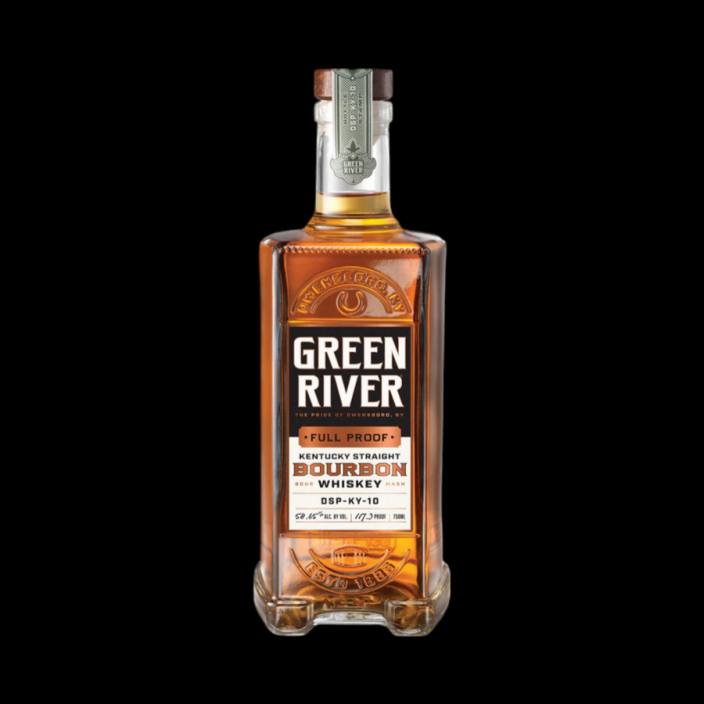
ABV: 58.65%
Average Price: $40
The Whiskey:
Green River has been producing critically acclaimed, affordable bourbons since the brand was revived and started hitting shelves in 2022. For this relatively new extension in their lineup, Green River Full Proof, they opted for a mash bill of 70% corn, 21% rye, and 9% malted barley before bottling the juice at barrel strength.
Tasting Notes:
Nose: Raisins and allspice jump out of the glass to greet the nose, along with a bit of sherried mushroom and coconut flake. This is such an atypical but alluring mix, and it really entices you to take a first sip.
Palate: Raisins, green grapes, cinnamon bark, and clove emerge on the palate, which is delightfully refined and compressed in the sense that the flavors feel densely packed. It also feels like the layers of flavor are distinct and well-developed, making sitting with it and picking it apart fun, as the medium-bodied bourbon offers just enough viscousness to hold your interest.
Finish: The end of each sip sees the addition of some fig newton and cracked black pepper as it sizzles away, leaving a strong impression on the palate through the delicious, lengthy finish.
Bottom Line:
While the mash bill in Green River Full Proof features some relatively high rye content, its sweetness and approachability win out over its spicier elements. While some bourbons are excellent for their brash, punch-you-in-the-face boldness, Green River Full Proof offers a bit more finesse for a sipping experience that puts panache before pugilism.
1. Maker’s Mark Cask Strength Bourbon
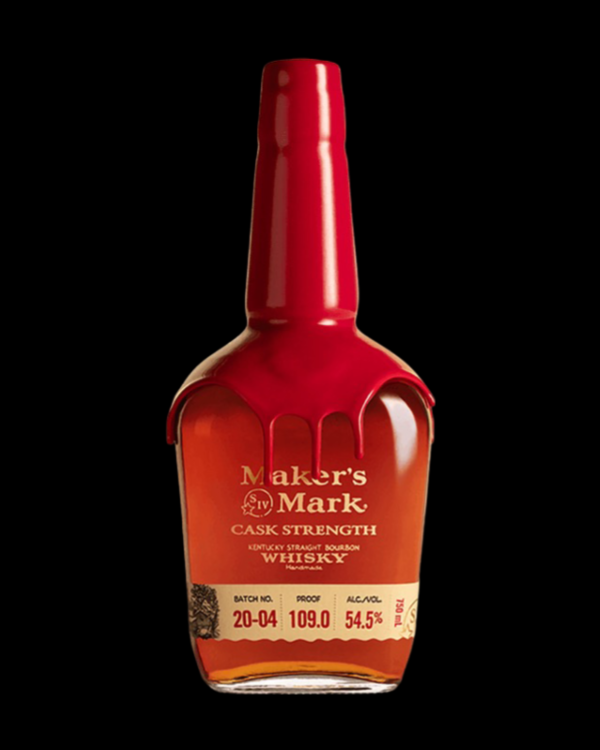
ABV: 54.5%
Average Price: $45
The Whiskey:
Maker’s Mark Cask Strength Bourbon is the fully amplified, small-batch version of one of the best-selling whiskeys in the world. Released in small batches, with their identifying codes found on the front label, this expression showcases Maker’s Mark in its purest form.
Tasting Notes:
Nose: On the nose, this whiskey begins with plenty of honeysuckle and toffee before the sweeter notes break rank and allow oak, red berries (think bright cherries and ripe raspberries), and a combination of oak and leather to rise out of the glass.
Palate: The first sip of Maker’s Mark Cask Strength is a revelation, resplendent with more pronounced red berry and caramel flavors than the nose at first indicated. Those flavors are far-reaching, with a refinement that rewards chewing the whiskey and allowing the viscous liquid to seep deep and then deeper still into your palate.
Finish: For the lengthy finish, Maker’s Mark Cask Strength offers a fresh cavalcade of accenting notes, ranging from vanilla and mellow oak to clove, orange blossom, and truffle honey. It’s a complex and captivating way to close this robust, elegant bourbon.
Bottom Line:
Maker’s Mark Cask Strength is the king of bourbons under $50; frankly, not enough people know it. While standard Maker’s Mark enjoys ubiquity at bars and liquor stores, this slightly harder-to-find offering tends to fly under the radar despite its incredible quality.
With the price of high-quality spirits rising across the board, Maker’s Mark Cask Strength Bourbon is undoubtedly the best whiskey under $50.









